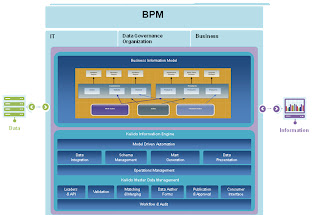Making Legacy Agile Controlled Migration
Controlled migration uses BPM solutions to "wrap" around ageing, inflexible, IT assets. The processes within these assets are exposed in a more flexible agile process layer. The processes can then be adapted to changing needs of the business without having to "rip and replace" core systems.
Controlled migration uses BPM solutions to "wrap" around ageing, inflexible, IT assets. The processes within these assets are exposed in a more flexible agile process layer. The processes can then be adapted to changing needs of the business without having to "rip and replace" core systems.
The problem with CRM, ERP and older mainframe applications is that they were not designed to be agile. CRM solutions are great data repositories but they support processes poorly, with users needing to navigate to the right screen to find the piece of information they need. Worse still, making changes to the original "data views" was a difficult, time consuming and costly exercise.
ERP Solutions fared little better as they were designed with a "best practice" process already installed. If the client wanted to amend or adapt this process it became a difficult, costly and lengthy exercise. Mainframes fare no better and were never designed to cope with today's fast changing process centric environments. Many applications were product centric and dictated a rigid hierarchical menu driven approach to accessing data and functions.
Other proprietary workflow or off the shelf products were never designed for integration and therefore became isolated islands of functionality and the only way to access them was to rekey information form one platform to the other, with the inevitable miss keying errors and delays in processing that result.
Modern enterprises are multi product customer centric organisations that require knowledge workers to execute multiple customer related tasks at the same time, with a backdrop of aging IT infrastructure, the challenges are huge.
By using a BPM solution like Pega Systems PRPC, the process is primary and the application is designed to present the right data to the right person, at the right time. The system guides the user through the process, as opposed to the user having to find the data or remember what to do next. Processes, products and even new applications can be added to an application in weeks or months rather than years.
Finally controlled migration is about protecting assets. The ability of BPM solutions to integrate more quickly with critical systems across the enterprise, to expose hidden processes and to facilitate change and adoption. By exposing functionality in the process layer organisations are able to extend the useful life of their IT assets which remain as systems of record or transaction processing engines. Over time more processes and business rules can be transferred to the more agile and flexible process layer while the underlying system can be safely retired or replaced. This "controlled migration" can be implemented with impact to business as usual.


